Tillandsia buchlohii
Click thumbnails for full size, scaled to a new window.
Tillandsia buchlohii
Paraguay
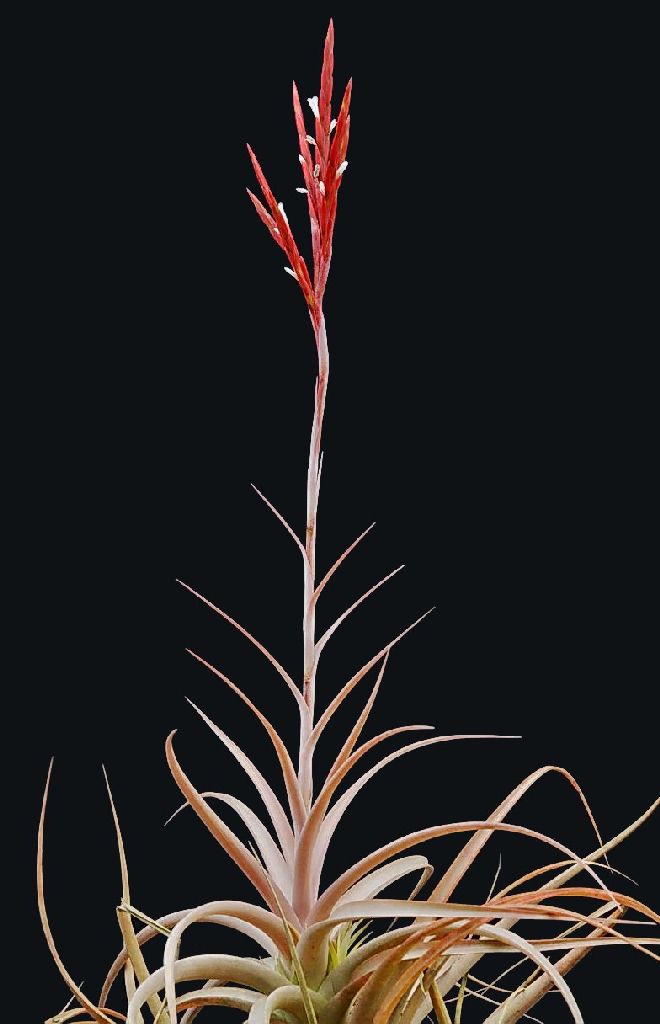
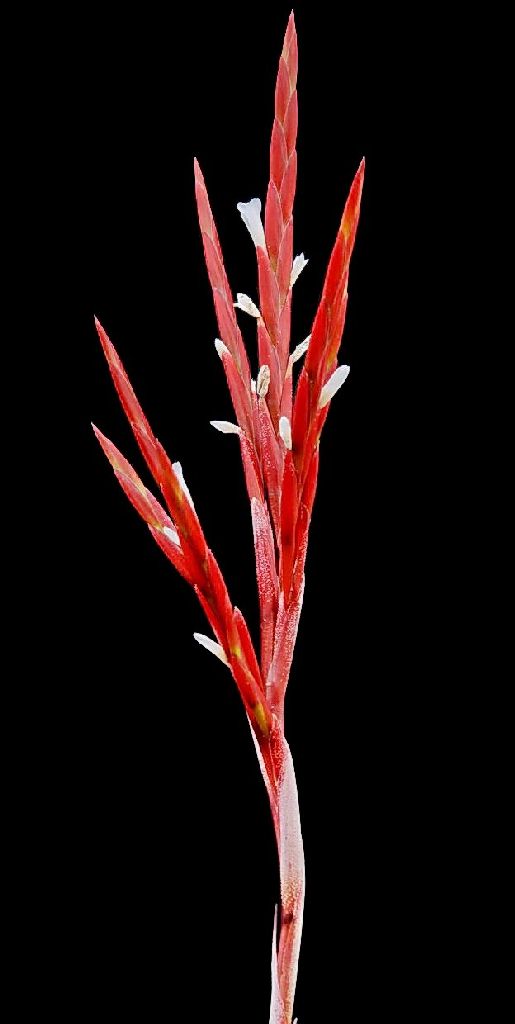
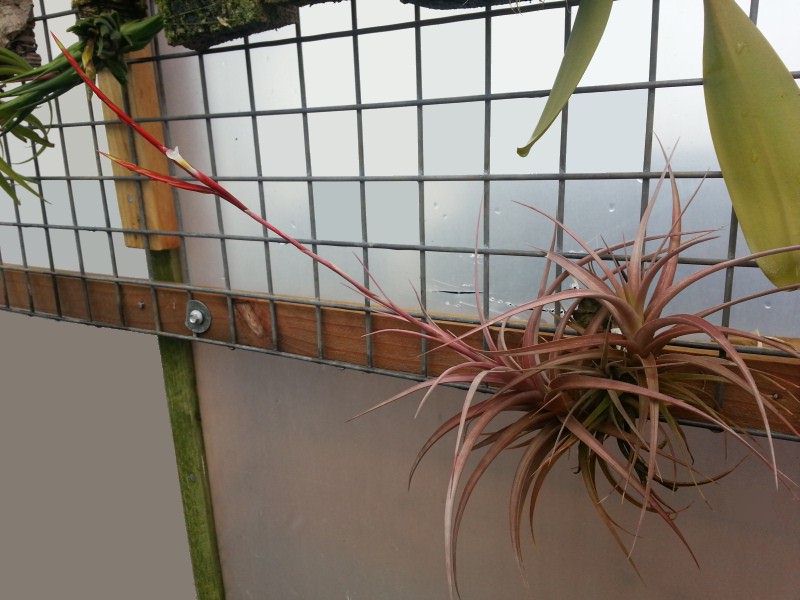
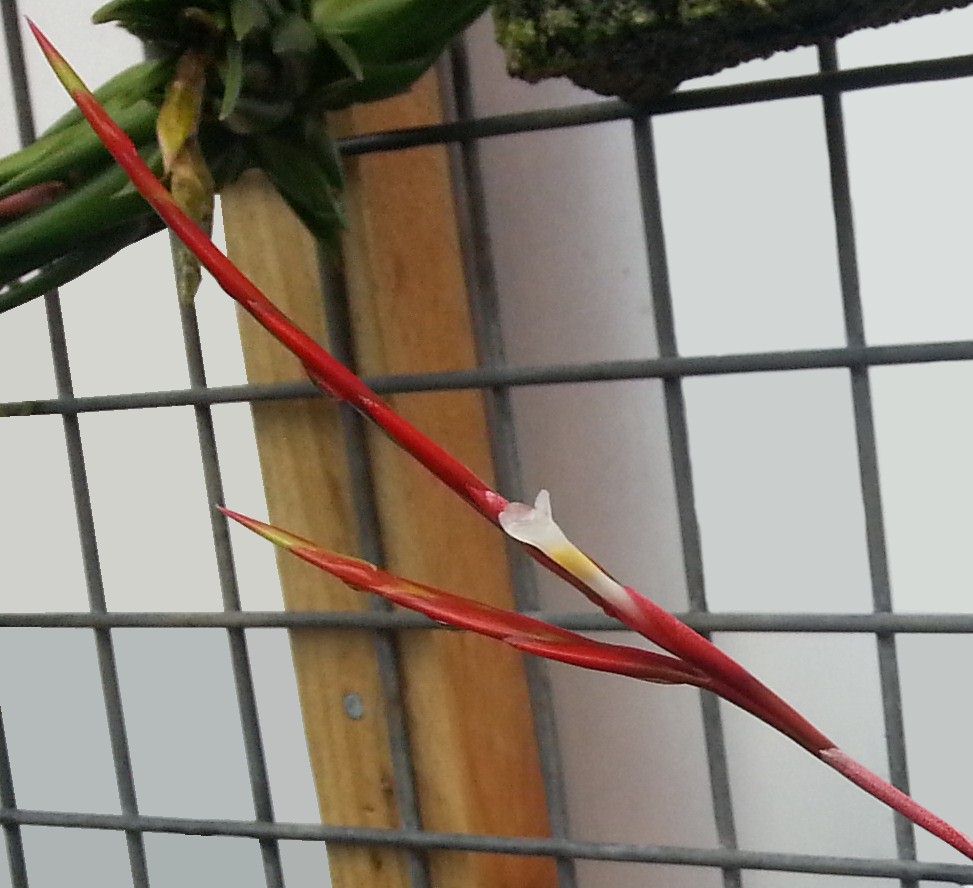
| Peter Tristram 02/12. |
Chris Larson 12/13. |
Peter Tristram ... "After many attempts and deaths from gassing I have finally matured and bloomed a T. buchlohii, a plant about the size of a typical latifolia v. divaricata. It seems to have an interesting botanical history too. I dare say this specimen would have been derived from the Heidelberg plants, spread far and wide now. Wherever I have seen it they all look the same!"
Chris Larson ... "I imported this from Pam in 2008. It had been sitting still for quite a long time after gassing, and has just started to take off in the past 12 months - & now it has finally flowered. The other clone I have of this plant, from Tropiflora, is a monster compared with this clone Ė but this one is just fine the way it is."
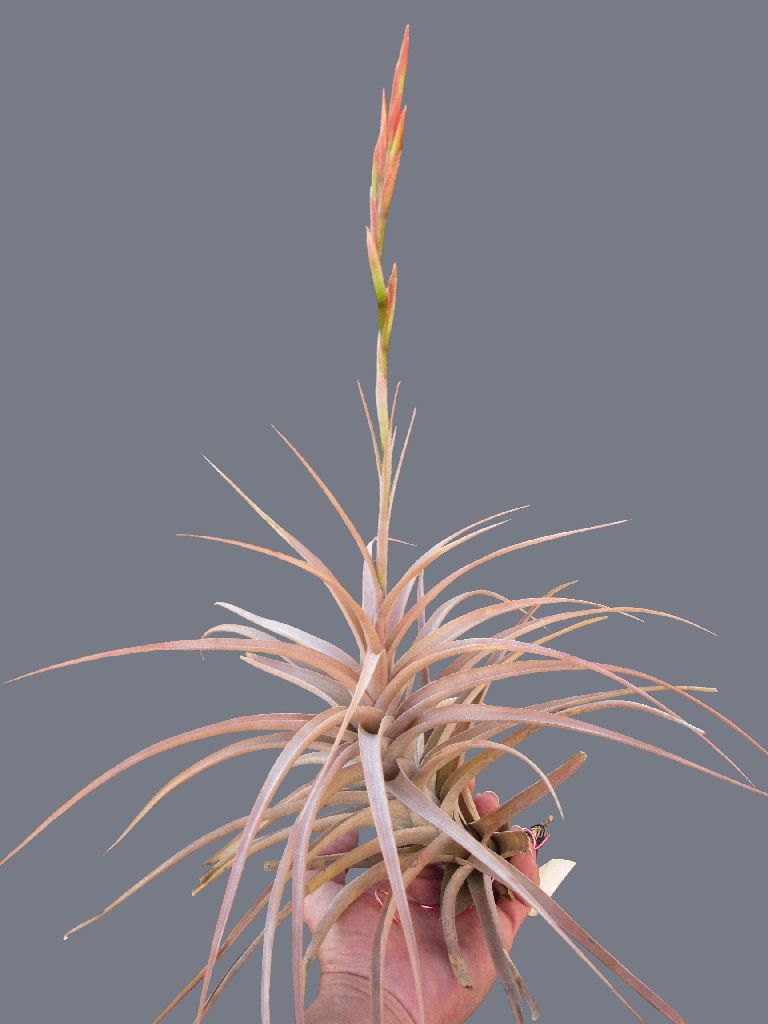
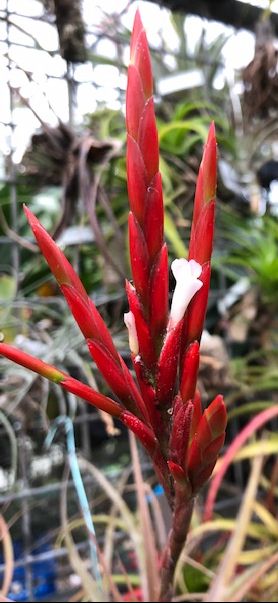
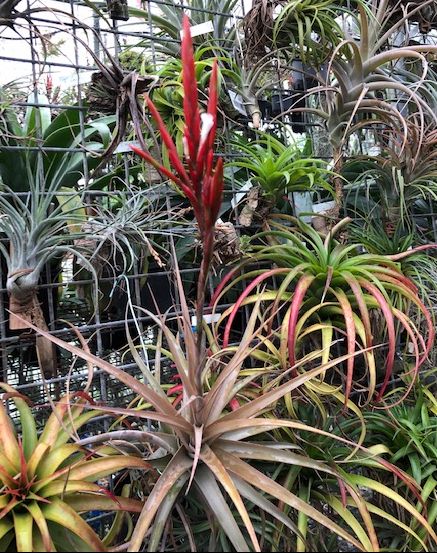
| Linda Wilkes 10/17 |
John Olsen 12/18 |
Linda Wilkes ... "Another of our gorgeous species preparing to bloom."
Chris Larson ... "Beautiful plant. One of the larger forms. The detail of the altitude at which it grows (on the disc) is a little vague, so Iíve been keeping it well protected (warm). Have you been growing in a more protected spot? Or have you (or anyone else) noticed whether it is cold tender?"
John Olsen ... "I have 2 forms which only differ in size really and they do well in Brisbane without special treatment."
Linda Wilkes ... "We have kept it in our temp controlled hot house over winters since we bought it , not game to tempt fate with it until we have more than one to see if it will handle a winter outside here with the frosts . The coldest it would have gotten here for it is 11 degrees when the outside temps were 2 and below. We grow it pretty open during most of the year usually just hanging out on an open wire rack."
Justin Lee ... "I'm going to throw a spanner in the works. I've been growing it here since 2010. It hasn't flowered yet but seems to be coping well."
Peter Tristram ... "T. buchlohii certainly does best if grown like xerographica - warm to hot, humid and pretty dry most of the time. For me thereís a sliding scale of growth from my Till tunnel, heated to 8C to an Unheated house to outside where itís really slow. I admire Justinís courage!
In my hardly heated tunnel they pup and bloom regularly. For the record the big form was purchased from Tropiflora by me in 2012 from memory. Chris and I have another form that appears smaller which we purchased from Pam much earlier(Birdrock Tropicals) but I havenít bloomed one yet. Chris?
Great species with a fantastic shiny red inflorescence and pure white flowers, a bit like an out of control vernicosa."
Pam Butler ... "Mine is growing outside in all weather. I am colder than John in winter. I will try one in the shadehouse and compare the growth."
Chris Larson ... "Peter, yes I have flowered it. As John says, same but smaller."
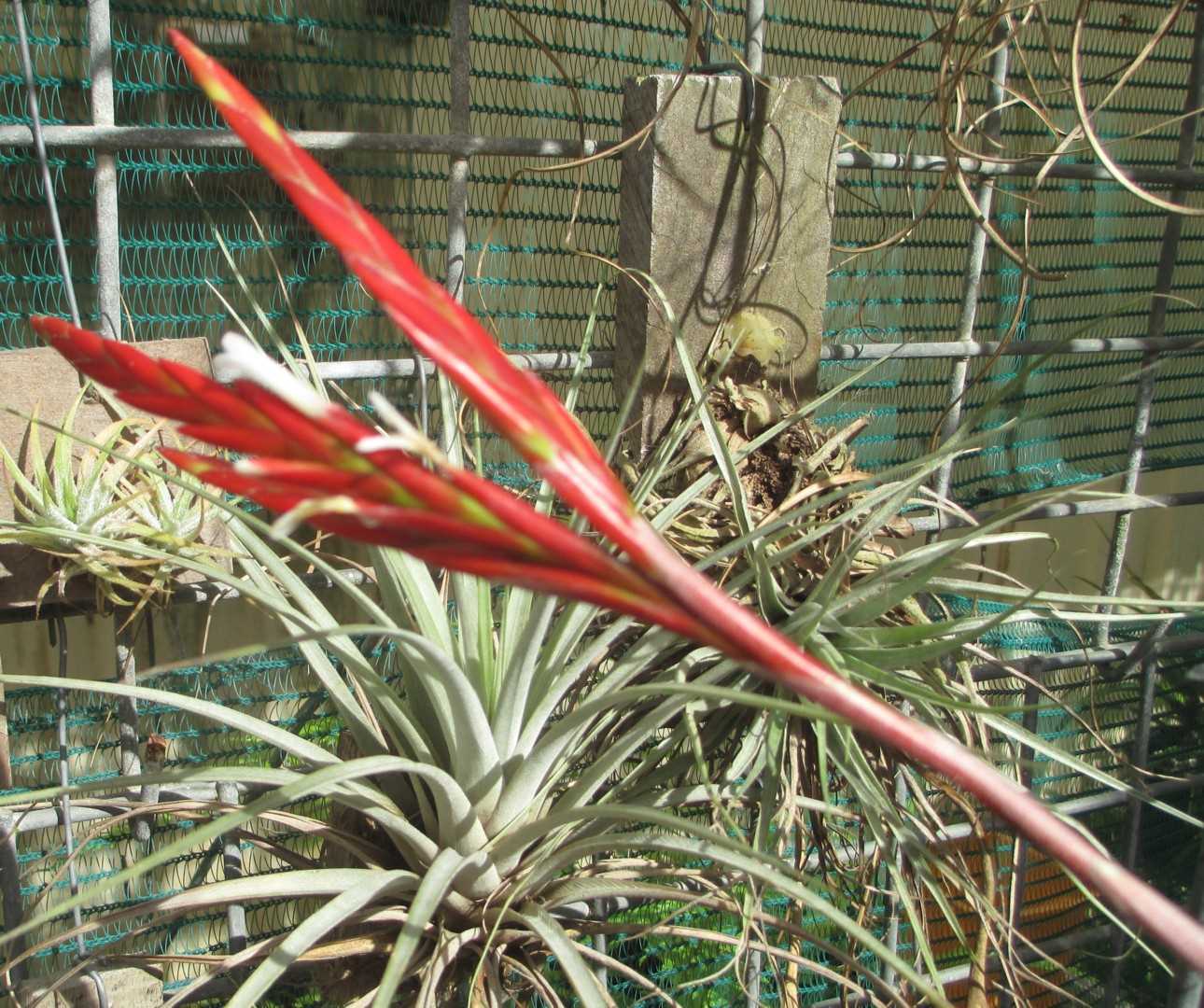

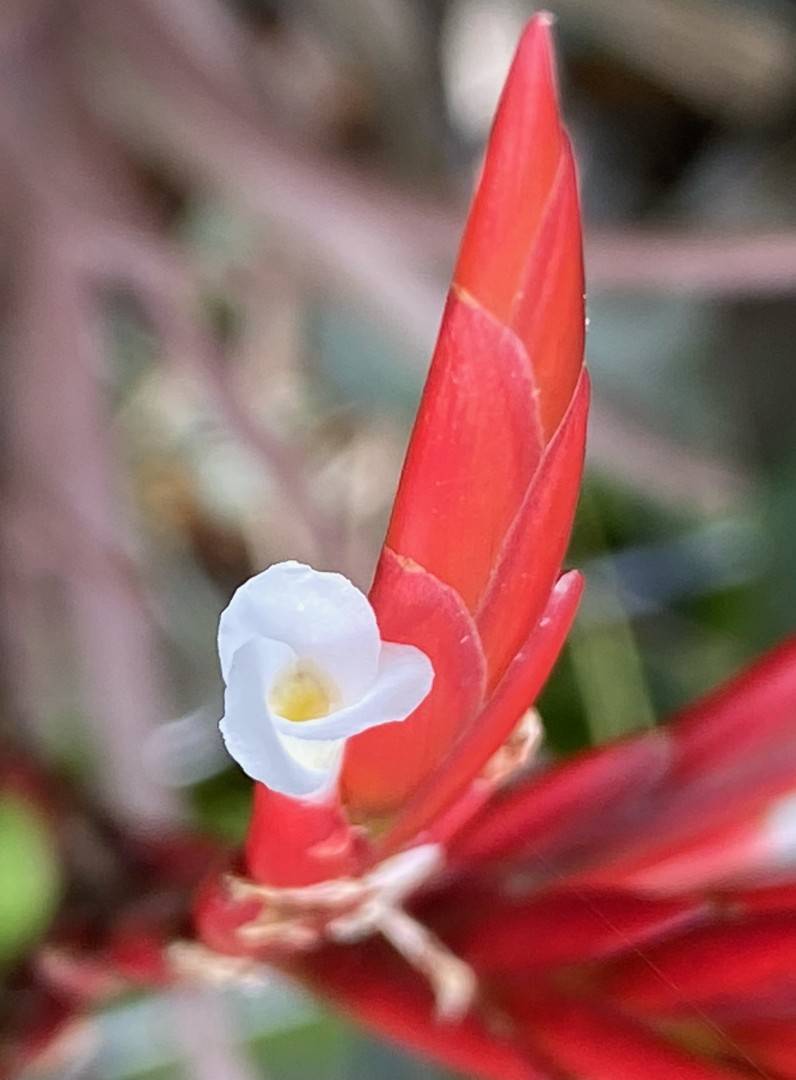
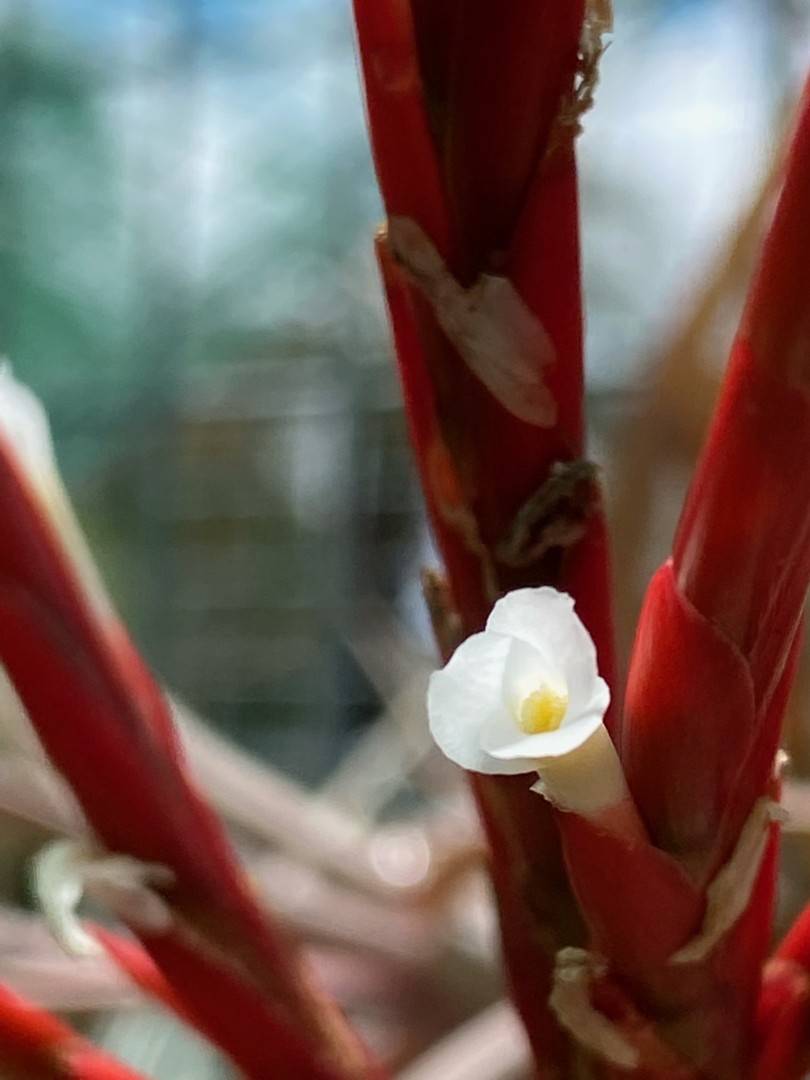
| Bob Hudson 11/20 |
Dale Dixon 01/21 |

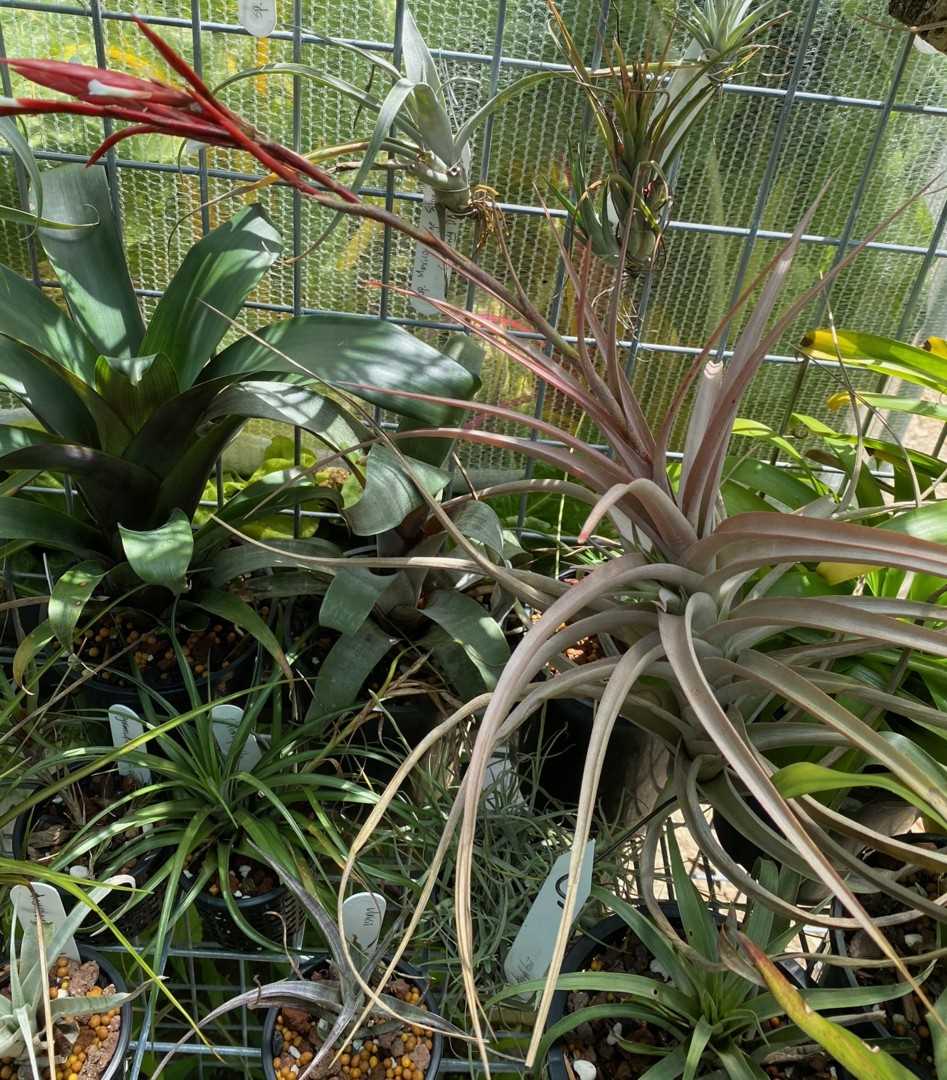

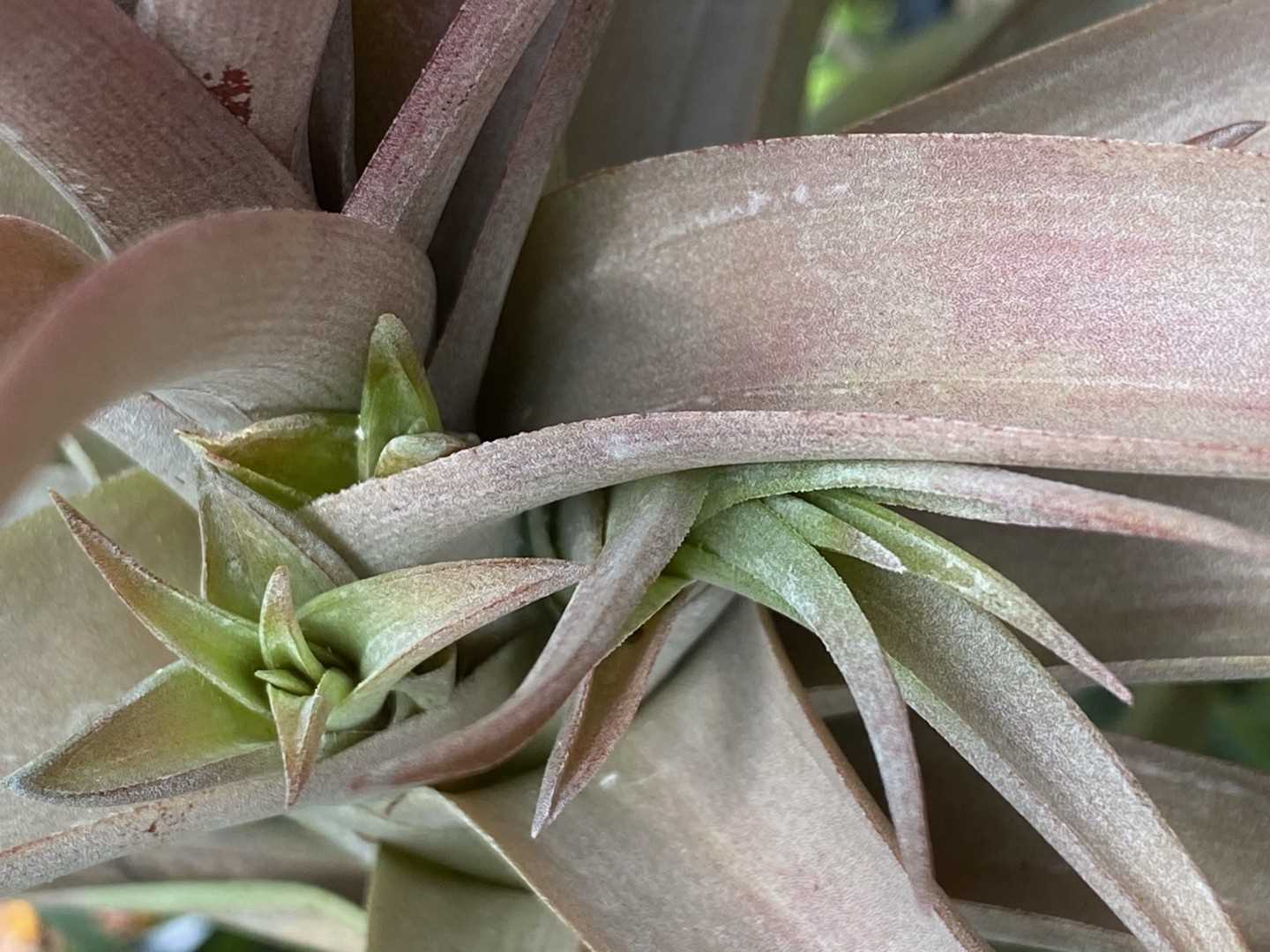 Dale Dixon ... "I have two plants flowering. Not sure if they are different clones but Iíve transferred pollen regardless. It maintains the brownish-pink leaf colour all year in my conditions. Three pups already evident in the crown."
Dale Dixon ... "I have two plants flowering. Not sure if they are different clones but Iíve transferred pollen regardless. It maintains the brownish-pink leaf colour all year in my conditions. Three pups already evident in the crown."
Tillandsia buchlohii Rauh, Trop. Subtrop Pflanz. 43:10-13. 1983
Planta longe caulescens ut in T. latifolia, florens usque ad 50cm alta. Folia numerosa spiraliter inserta vagina amplexicauli 3cm longa, 3.5cm lata pallide spadicea. Lamina anguste lanceolata, usque ad 30cm longa, supra vaginam 2cm lata, involuta, in apicem angustissimam excurrens, subtus distincte nervata, utrimque densissime appresso-lepidota; lepides minutissimae centro viridi. Scapus inflorescentiae folia superans, usque ad 25cm longus, tenuis, viridis, disperse lepidotus. Phylla scapi congesta, basalia subfoliata, superiora elaminata, viridia vel rufescenti-brunnea, tantum apiculata, dense cano-lepidota. Inflorescentia laxe bipinnata, rare tripinnata, usque ad 13cm longa, 6cm lata spicis plusminusve 5 erectis. Bracteae primariae 2-3cm longae, spicis breviores, brunnescenti-rubrae, supra dense lepidotae, apiculatae. Spicae longe stipitatae (basales usque ad 4cm) folio infra spicam 1.5cm alte inserto praeditae, angustae, usque ad 7cm longae, 0.6cm latae, leviter convexae, laxe 6-10-florae, rhachis glabra viridis sub anthesi visibilis, arcuate erigens. Bracteae florales erectae rhachidi appressae, ecarinatae vel modice carinatae, rubiginosae, usque ad 15cm longae, acuminatae margine membranaceae, apice disperse lepidotae, paulo breviores quam calyx, sicco valde nervatae. Sepala anguste lanceolata, usque ad 17mm longa, tenuia, posteriora carinata, apice rufescentia, usque ad basim libera. Petala alba, 2.5cm longa, 3mm lata, tubum angustissimum formantia apicibus obtusis recurvatis. Stamina et stylus profunde inclusa. Filamenta superne plicata.
Planta longe caulescens ut in T. latifolia, florens usque ad 50cm alta. Folia numerosa spiraliter inserta vagina amplexicauli 3cm longa, 3.5cm lata pallide spadicea. Lamina anguste lanceolata, usque ad 30cm longa, supra vaginam 2cm lata, involuta, in apicem angustissimam excurrens, subtus distincte nervata, utrimque densissime appresso-lepidota; lepides minutissimae centro viridi. Scapus inflorescentiae folia superans, usque ad 25cm longus, tenuis, viridis, disperse lepidotus. Phylla scapi congesta, basalia subfoliata, superiora elaminata, viridia vel rufescenti-brunnea, tantum apiculata, dense cano-lepidota. Inflorescentia laxe bipinnata, rare tripinnata, usque ad 13cm longa, 6cm lata spicis plusminusve 5 erectis. Bracteae primariae 2-3cm longae, spicis breviores, brunnescenti-rubrae, supra dense lepidotae, apiculatae. Spicae longe stipitatae (basales usque ad 4cm) folio infra spicam 1.5cm alte inserto praeditae, angustae, usque ad 7cm longae, 0.6cm latae, leviter convexae, laxe 6-10-florae, rhachis glabra viridis sub anthesi visibilis, arcuate erigens. Bracteae florales erectae rhachidi appressae, ecarinatae vel modice carinatae, rubiginosae, usque ad 15cm longae, acuminatae margine membranaceae, apice disperse lepidotae, paulo breviores quam calyx, sicco valde nervatae. Sepala anguste lanceolata, usque ad 17mm longa, tenuia, posteriora carinata, apice rufescentia, usque ad basim libera. Petala alba, 2.5cm longa, 3mm lata, tubum angustissimum formantia apicibus obtusis recurvatis. Stamina et stylus profunde inclusa. Filamenta superne plicata.
Plant long stemmed similar to T. latifolia, flowering to 50cm high. Leaves numerous, arranged spirally.
Leaf sheath 3cm long, 3.5cm wide, pale light brown, enclosing the stem.
Leaf blade thin lance like, to 30cm long, 2cm wide near sheath, rolled inwards, tapering to a very thin tip, underneath clearly nerved, both sides dense appressed lepidote, scales small with green centre.
Scape exceeds the leaves, to 25cm long, thin, green, scattered lepidote.
Scape bracts dense, upright, the bottom ones leaflike, the upper ones blade-less, green to reddish brown, acuminate, dense grey lepidote.
Inflorescence laxly bipinnate, rarely tripinnate, to 13cm long, 6cm wide, with ca. 5 erect spikes.
Primary bracts 2 Ė 3cm long, brownish red, top side densely scaled, sharply acuminate, shorter than the spike.
Spike long stemmed (to 4cm from base), with a 1.5cm high bract, thin, to 7cm long, 0.6cm wide, weakly convex, laxly 6 Ė 10 flowered.
Spike rhachis green, naked, visible at flowering, bent upwards.
Flower bracts erect, adjacent to the rhachis, not keeled to weakly keeled, red brown, to 15mm long, acuminate, the edges abundantly and the tip scattered scaled, a little shorter than the sepals, when dry strongly nerved.
Sepals thin lancelike, to 17mm long, thin, the posterior ones keeled, the tip reddish, free.
Petals white, 2.5cm long, 3mm wide, making a tube, with blunt reflexed tips.
Stamen & Style deeply enclosed, filament pleated in upper part.
Holotype BGH Nr. 33 518, HEID
Habitat Paraguay without exact location.
Named after Prof. Dr. G. Buchloh, University of Hohenheim, Germany
T. buchlohii is an interesting newly found plant from Paraguay, where the exact location is unfortunately not known. The plant came from Fa. Sudpflanzenimport (SPI, Wiesbaden) that imports bromeliads and cactus from Paraguay, to the Botanical garden of the University of Heidelberg. It resembles vegetatively on the basis of its long stem, a T. latifolia, especially the var. divaricata (Bentham) Mez, but these have wider, horizontal spreading spikes, shiny, densely imbricate, clearly carinate floral bracts and much smaller, pale violet flowers. Moreover, T. latifolia var. divaricata comes only from Ecuador and North-Peru.
Also differs from T. vernicosa which has
1. No stem
2. Is much smaller and always in dense clumps
3. Thin leaves
4. Small, complanate, to 20 flowered digitate and sessile spike (without sterile basal part)
5. Floral bracts densely imbricate (Rhachis not visible)
6. Sepals not keeled
WALTER TILL in Bromelia Dec 1996
During a visit to the herbarium of the Instituto Miguel Lillo (LIL), in San Miguel de Tucuman, Tucuman Province, Argentina, several specimens were chosen for detailed study at the Botanical Institute, University of Vienna (WU), Austria. The specimen reported on here is especially interesting.
Herbarium sheet #11354 (LIL) consists of an entire inflorescence, with the upper portion of the scape on the left and the lower portion on the right. The label attached to this sheet is of the type used at LIL during the first half of this century. It exhibits the following Spanish text: "Tillandsia polystachia, Brazil, Mato Grasso, Cerro Pan de Azucar, 9.11.1945, epifita y terrestre, "deb." Albornoz, leg. T. Rojas, det. L. B. Smith" (sic!).
This specimen was not cited in the Flora Neotropica (1977). A comparative analysis shows that Rojas' material (no number) is very similar to the protologue of Tillandsia buchlohii Rauh and to the isotype of this species deposited at WU. However, W. Rauh (1983) described this new species from material from cultivation in Paraguay, without mentioning the exact location. If this species were actually to be found in Paraguay, it must occur in the northeastern part of the country.
Based on Rojas' specimen, it is now possible to identify not only the true geographic origin of the species, but also to record this new occurrence for the Brazilian flora. Apparently there is only one mountain in Mato Grosso do Sul known as "Pao de Acucar" (Anonymous, 1963). It is located a short distance east of Porto Murtinho on the Paraguayan border, beside Highway BR 267(21į 24 'S 57į 51 'W). It is quite possible that Theodoro Rojas crossed the border at Porto Murtinho to collect plants in the vicinity, just as it also may be that the type of T. buchlohii is from nearby areas on the Paraguayan side.
Updated 15/01/21










